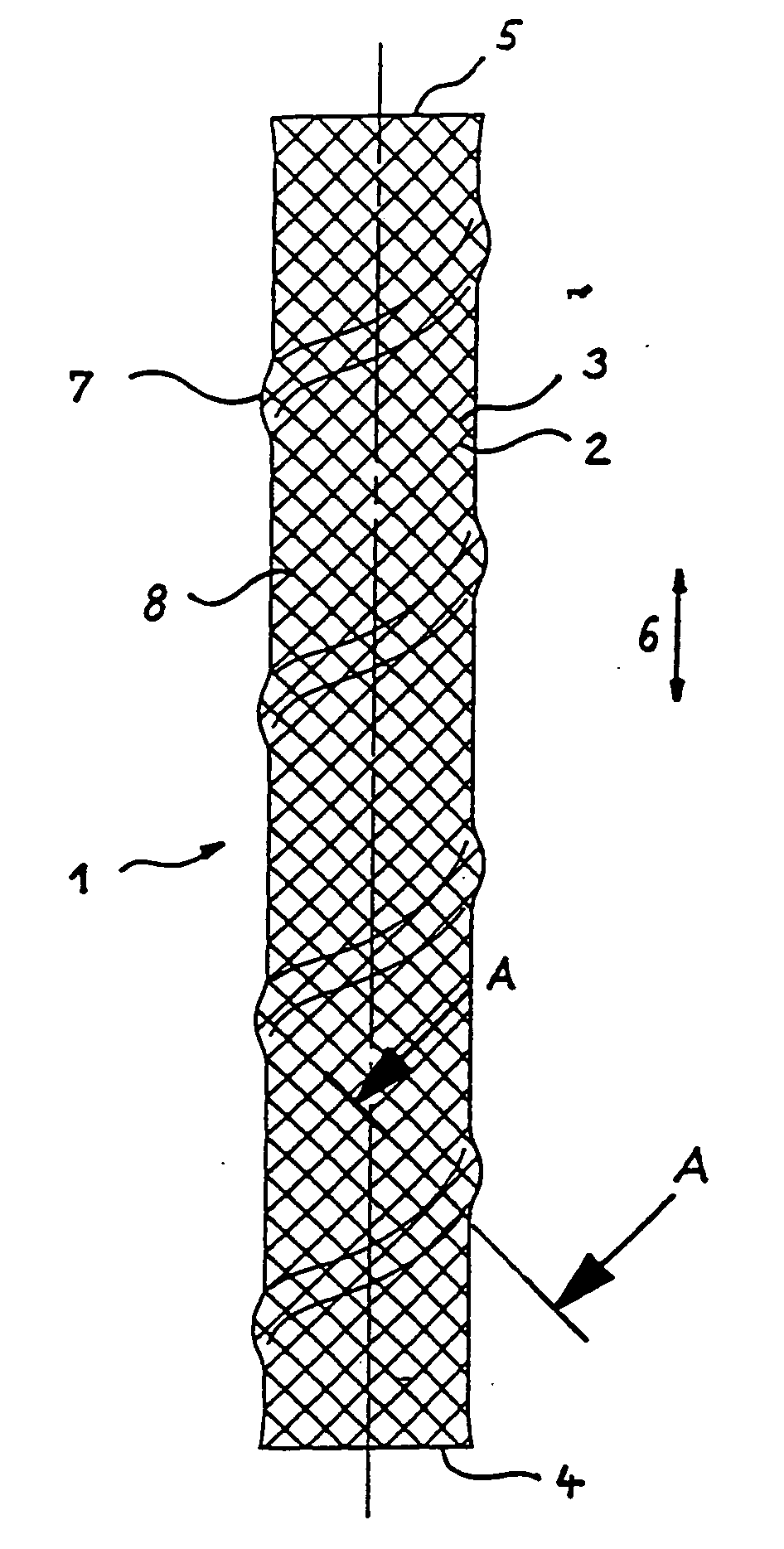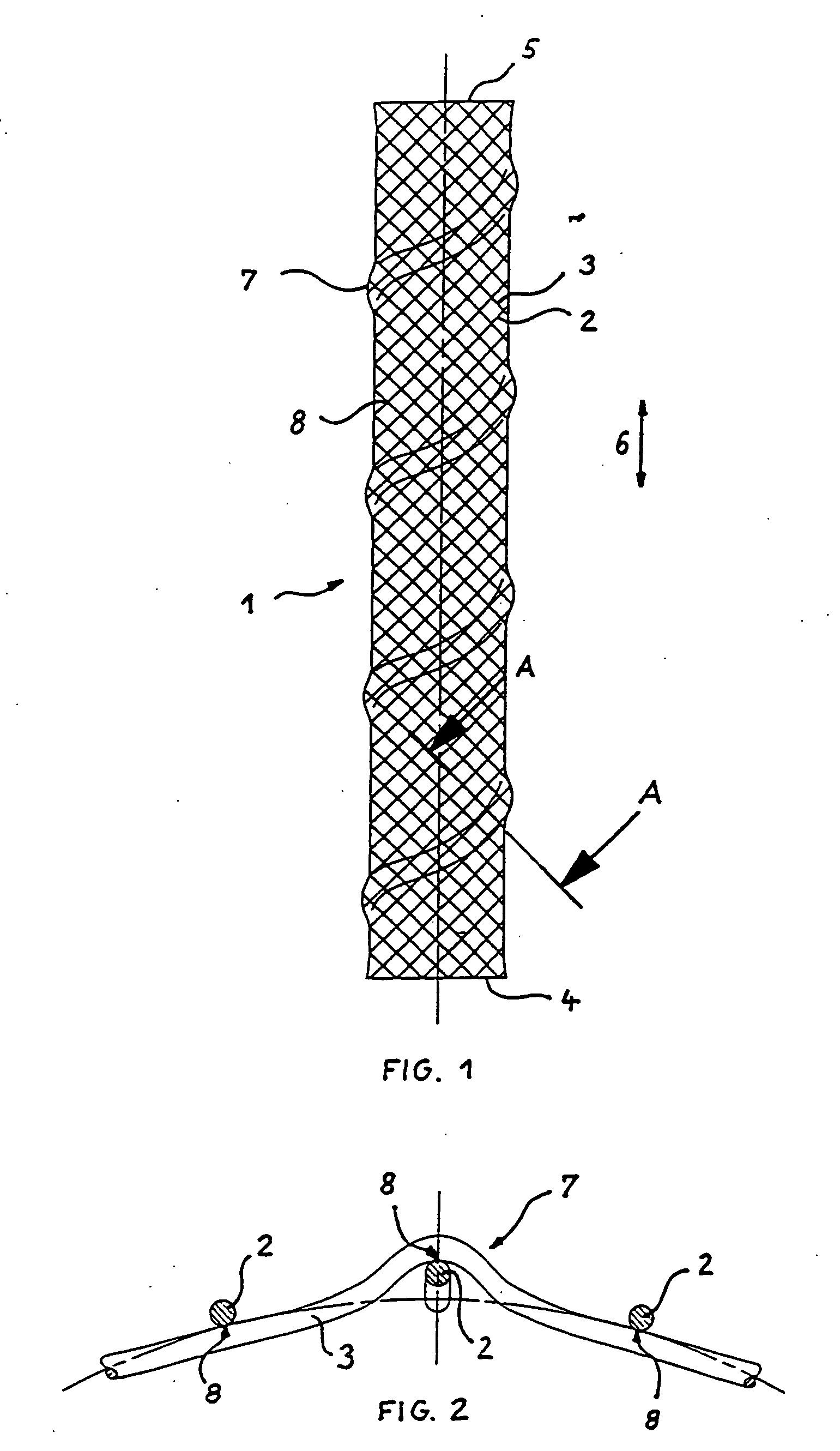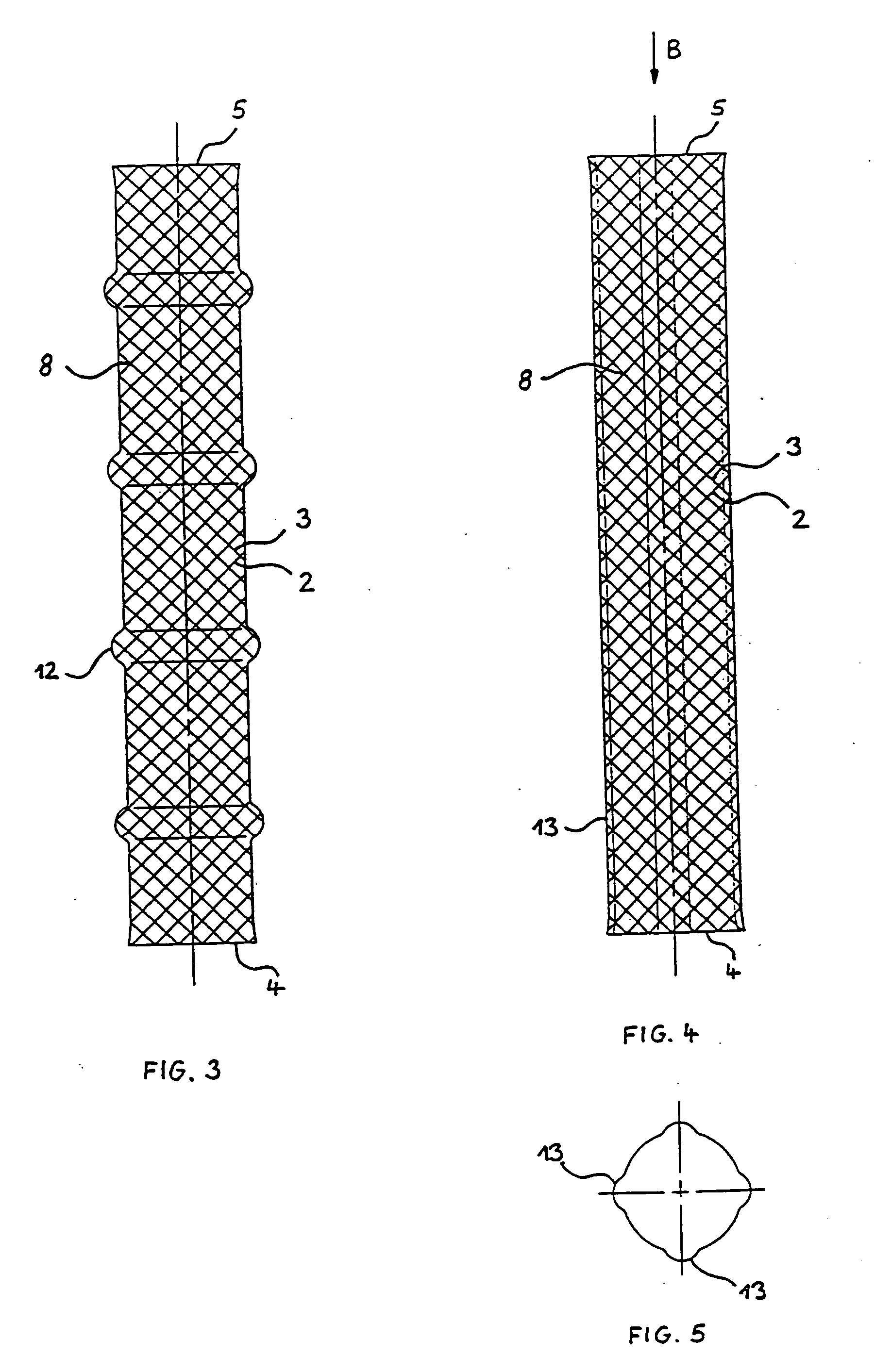Braided stent
a brad stent and stent technology, applied in the field of brad stents, can solve the problems of insufficient shape stability of less-shortening stent segments, the risk of local axial displacement of stents, and the inability of stents to resist flattening, so as to achieve less-shortening stents and facilitate manufacturing.
- Summary
- Abstract
- Description
- Claims
- Application Information
AI Technical Summary
Benefits of technology
Problems solved by technology
Method used
Image
Examples
Embodiment Construction
[0027] The stent depicted in FIG. 1 comprises a flexible self expanding braided tubular wall 1 which is composed of a first plurality of parallel spring stainless steel wires 2 helically wound in a first direction crossing a second plurality of parallel spring stainless steel wires 3 helically wound in a second direction opposite to the first one. The braided structure assures contraction of the stent in the radial direction when the proximal and distal ends 4 and 5 of the stent are pulled away from one another as exemplified by arrows 6, and self expansion of the stent in the radial direction when the pull according to arrows 6 is released. This configuration is well known in the art and needs no further explanation. Of course, other known braidings or patterns providing the same effect may be used.
[0028] The tubular wall 1 of the stent having a helical pattern of elevations 7 which is outwardly formed and has an angle of gradient or pitch slightly smaller than the angle of gradie...
PUM
| Property | Measurement | Unit |
|---|---|---|
| obtuse angles | aaaaa | aaaaa |
| angles | aaaaa | aaaaa |
| braiding angle | aaaaa | aaaaa |
Abstract
Description
Claims
Application Information
 Login to View More
Login to View More - R&D
- Intellectual Property
- Life Sciences
- Materials
- Tech Scout
- Unparalleled Data Quality
- Higher Quality Content
- 60% Fewer Hallucinations
Browse by: Latest US Patents, China's latest patents, Technical Efficacy Thesaurus, Application Domain, Technology Topic, Popular Technical Reports.
© 2025 PatSnap. All rights reserved.Legal|Privacy policy|Modern Slavery Act Transparency Statement|Sitemap|About US| Contact US: help@patsnap.com



